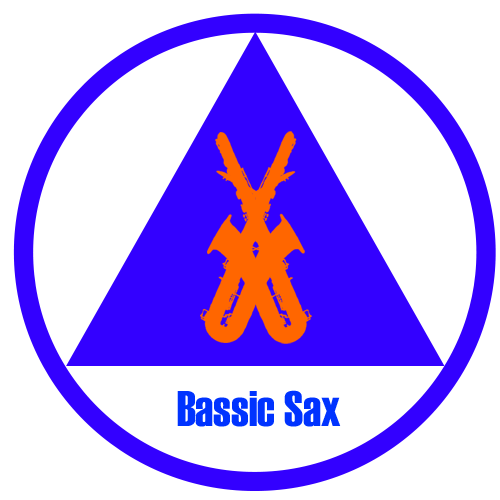The other day I was reading something about Hammerschmidt Klingsor saxophones again. I can’t remember anymore where on the ‘Net I was, but someone had just bought one, and other players were chiming in with their praise for this relatively obscure, vintage German brand. (BTW, this praise was coming from non-Hammerschmidt owners.)
I try to live by the old adage that if you don’t have anything nice to say, then don’t say anything at all. True, the horns with the acrylic key guards are certainly striking, and the company spent a lot of time and effort on details—like to body to bow and bell to bow connecting rings—but the horns are inconsistent at best. I should know, I have 3 of them (2 tenors and an alto).
Hammerschmidt Klingsor tenor # 043XX photo by H. Kahlke © 2013
I don’t know how widespread the intonation problems are with the later model Klingsor horns that Hammerschmidt produced. I just know that according to German sax tech Uwe Ladwig, who has worked on numerous Klingsors, and has written about the company for the German music journal Sonic sax & brass, the problem’s root cause has been identified as a flaw in the neck design. This is why 1 of my tenors will never play in tune.
That said, Hammerschmidt Klingsor saxophones are still a pretty lot. They are relatively uncommon in the vintage saxophone world, and are a fun conversation piece.
My full-pearl alto is hanging on a wall in my studio, and usually draws the attention even of non-sax players. Sadly, as long as I own it, it will not be getting a restoration. It might play well once restored. Or, its intonation might be off enough to render it useless for professional work. There is no way to know until the work is done, and I’m not prepared to spend the money to find out.
The fact is there are other vintage, German pro altos out there that are consistent, which are a known entity. For example, with a JK Toneking, The New King, or a Hohner President (now there’s a sleeper horn for you), you know what you’re getting: a solid horn, with solid intonation.
So my advice to anyone wanting to buy a vintage, German saxophone, is to carefully consider your options. If a Hammerschmidt Klingsor comes along, play-test it before you buy it. See what else you can buy. Is there a JK or a Hohner available? Take your time, you might very well be better served going with a different brand.
When it comes to vintage horns, there are of course no absolutes. They were all hand-built, have likely gone through multiple owners, and have had varying levels of service over their 50+ year lifespan. That’s why trying before you buy, or buying through a reputable dealer is paramount.



